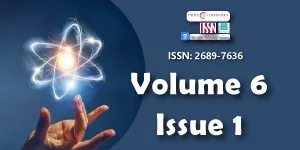Determinism and chaos – a story about Big Bang, singularity and the future of mankind
Main Article Content
Abstract
People have always tried to understand and tame the nature around them. It is a well-known fact that the sanest and safe approach from a psychological point of view is to focus on the present moment, the here and now. Nevertheless, we keep looking and living in the past or daydreaming and making predictions about what the future will bring. This paper is looking at this topic trying to unify several perspectives, stemming from a very diverse set of disciplines: biology, genetics, economics and cryptography, which are apparently working in parallel to solve the same problem. They all aim to find a theory of everything, one that can make sense out of chaos, light out of darkness and that can accurately predict the future based on present and past events. The current paper is supposed to inspire researchers to ask themselves tough questions, sometimes completely outside of their comfort zone, that can lead to discoveries with a huge positive impact on us all.
Downloads
Article Details
Copyright (c) 2023 Dinu A, et al.

This work is licensed under a Creative Commons Attribution 4.0 International License.
Licensing and protecting the author rights is the central aim and core of the publishing business. Peertechz dedicates itself in making it easier for people to share and build upon the work of others while maintaining consistency with the rules of copyright. Peertechz licensing terms are formulated to facilitate reuse of the manuscripts published in journals to take maximum advantage of Open Access publication and for the purpose of disseminating knowledge.
We support 'libre' open access, which defines Open Access in true terms as free of charge online access along with usage rights. The usage rights are granted through the use of specific Creative Commons license.
Peertechz accomplice with- [CC BY 4.0]
Explanation
'CC' stands for Creative Commons license. 'BY' symbolizes that users have provided attribution to the creator that the published manuscripts can be used or shared. This license allows for redistribution, commercial and non-commercial, as long as it is passed along unchanged and in whole, with credit to the author.
Please take in notification that Creative Commons user licenses are non-revocable. We recommend authors to check if their funding body requires a specific license.
With this license, the authors are allowed that after publishing with Peertechz, they can share their research by posting a free draft copy of their article to any repository or website.
'CC BY' license observance:
|
License Name |
Permission to read and download |
Permission to display in a repository |
Permission to translate |
Commercial uses of manuscript |
|
CC BY 4.0 |
Yes |
Yes |
Yes |
Yes |
The authors please note that Creative Commons license is focused on making creative works available for discovery and reuse. Creative Commons licenses provide an alternative to standard copyrights, allowing authors to specify ways that their works can be used without having to grant permission for each individual request. Others who want to reserve all of their rights under copyright law should not use CC licenses.
Mobbs D, Hagan CC, Dalgleish T, Silston B, Prévost C. The ecology of human fear: survival optimization and the nervous system. Front Neurosci. 2015 Mar 18;9:55. doi: 10.3389/fnins.2015.00055. PMID: 25852451; PMCID: PMC4364301.
Dinu A, Frunzete M. Singularity, Observability and Statistical Independence in the Context of Chaotic Systems. Mathematics. 2023; 11(2):305. https://doi.org/10.3390/math11020305
Dinu A, Vlad A. The compound tent map and the connection between Gray codes and the initial condition recovery, Scientific Bulletin – Universitatea Politehnica Bucuresti, A series: Applied Mathematics and Physics. 2014;1.
Torday JS. The Singularity of nature. Prog Biophys Mol Biol. 2019 Mar;142:23-31. doi: 10.1016/j.pbiomolbio.2018.07.013. Epub 2018 Aug 1. PMID: 30076851.
Matsuno K. Making biological theory more down to Earth. Prog Biophys Mol Biol. 2013 Sep;113(1):46-56. doi: 10.1016/j.pbiomolbio.2013.03.004. Epub 2013 Apr 2. PMID: 23562478.
Mazzocchi F. Complexity and the reductionism-holism debate in systems biology. Wiley Interdiscip Rev Syst Biol Med. 2012 Sep-Oct;4(5):413-27. doi: 10.1002/wsbm.1181. Epub 2012 Jul 3. PMID: 22761024.
Hawking SW, Ellis GFR. The Large-scale Structure of Space-time, University Press, Cambridge. 1973.
Whitehead AN. Process and Reality. Free Press, New York. 2010.
Sheldrake R. Science and Spiritual Practices. Counterpoint Press, Berkeley. 2018.
Smolin L. The Life of the Cosmos. 1999.
Yusuf A, Qureshi S, Shah SF. Mathematical analysis for an autonomous financial dynamical system via classical and modern fractional operators, Chaos, Solitons & Fractals. 2020; 132:109552; 0960-0779. https://doi.org/10.1016/j.chaos.2019.109552.
Jahanshahi H, Sajjadi SS, Bekiros S, Aly AA. On the development of variable-order fractional hyperchaotic economic system with a nonlinear model predictive controller, Chaos, Solitons & Fractals. 2021; 144:110698; 0960-0779. https://doi.org/10.1016/j.chaos.2021.110698.

